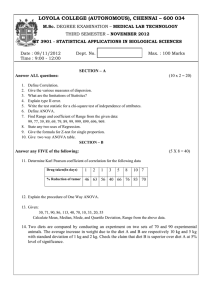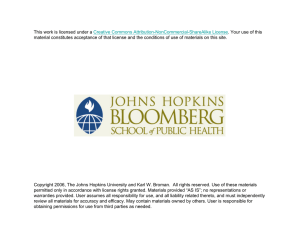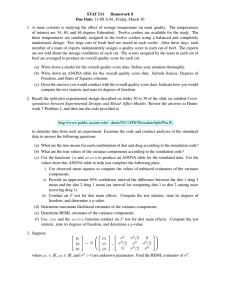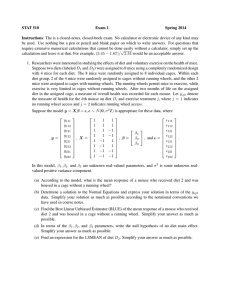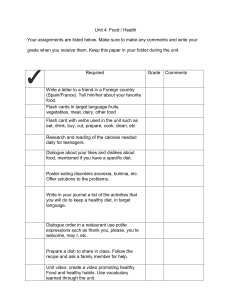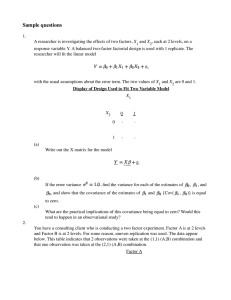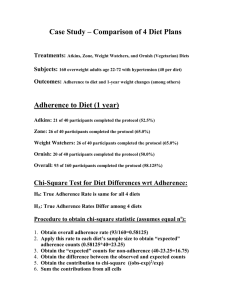STAT 511 Homework 7 Due Date: 11:00 A.M., Wednesday, March 21
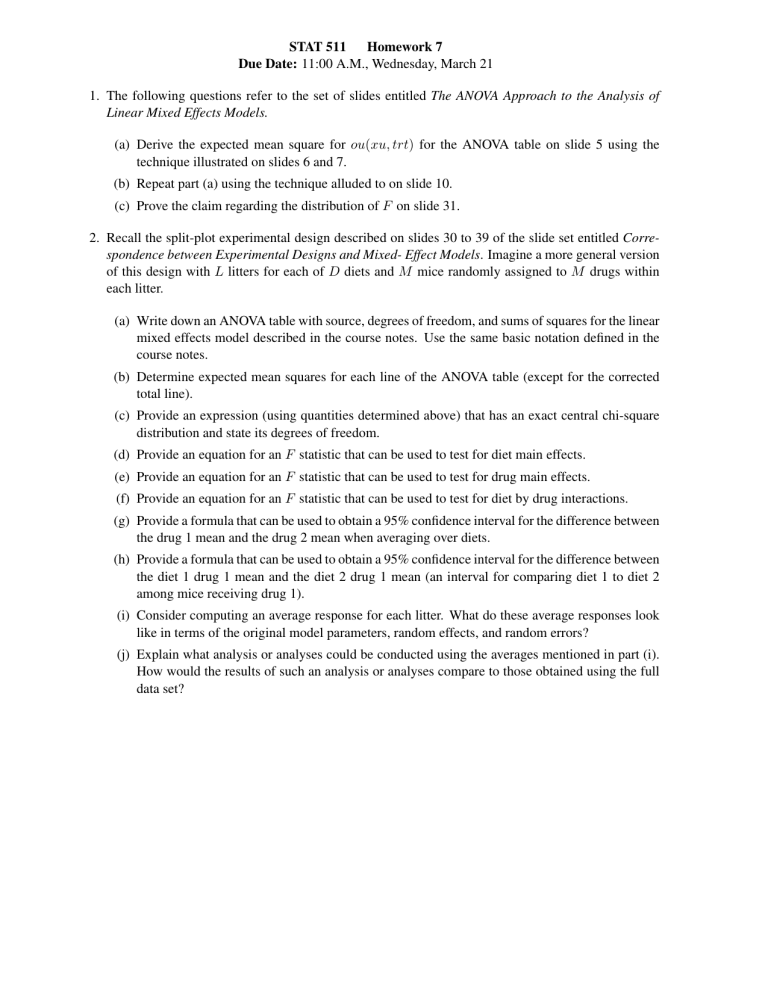
STAT 511 Homework 7
Due Date: 11:00 A.M., Wednesday, March 21
1. The following questions refer to the set of slides entitled The ANOVA Approach to the Analysis of
Linear Mixed Effects Models.
(a) Derive the expected mean square for ou ( xu, trt ) for the ANOVA table on slide 5 using the technique illustrated on slides 6 and 7.
(b) Repeat part (a) using the technique alluded to on slide 10.
(c) Prove the claim regarding the distribution of F on slide 31.
2. Recall the split-plot experimental design described on slides 30 to 39 of the slide set entitled Correspondence between Experimental Designs and Mixed- Effect Models . Imagine a more general version of this design with L litters for each of D diets and M mice randomly assigned to M drugs within each litter.
(a) Write down an ANOVA table with source, degrees of freedom, and sums of squares for the linear mixed effects model described in the course notes. Use the same basic notation defined in the course notes.
(b) Determine expected mean squares for each line of the ANOVA table (except for the corrected total line).
(c) Provide an expression (using quantities determined above) that has an exact central chi-square distribution and state its degrees of freedom.
(d) Provide an equation for an F statistic that can be used to test for diet main effects.
(e) Provide an equation for an F statistic that can be used to test for drug main effects.
(f) Provide an equation for an F statistic that can be used to test for diet by drug interactions.
(g) Provide a formula that can be used to obtain a 95% confidence interval for the difference between the drug 1 mean and the drug 2 mean when averaging over diets.
(h) Provide a formula that can be used to obtain a 95% confidence interval for the difference between the diet 1 drug 1 mean and the diet 2 drug 1 mean (an interval for comparing diet 1 to diet 2 among mice receiving drug 1).
(i) Consider computing an average response for each litter. What do these average responses look like in terms of the original model parameters, random effects, and random errors?
(j) Explain what analysis or analyses could be conducted using the averages mentioned in part (i).
How would the results of such an analysis or analyses compare to those obtained using the full data set?
